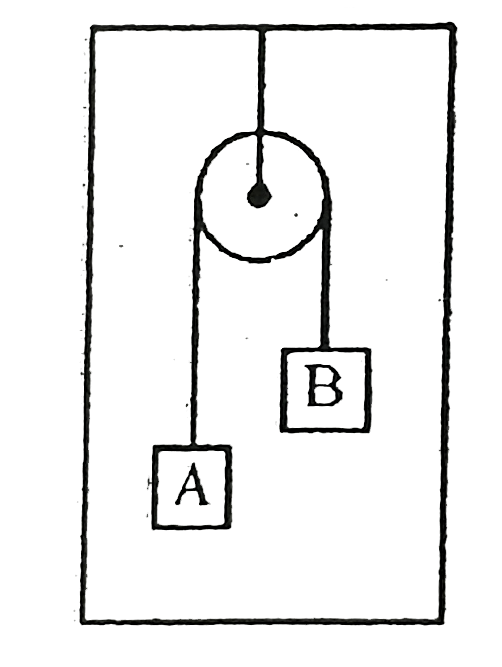An elevator cab is pulled upward by a cable. The cab and its single occupant have a combined mass of 2000 kg. When that occupant drops a coin, its acceleration relative to the cab is 8.30 m/s2 downward. What is the tension in the cable?
To solve the problem, we need to determine the tension in the cable pulling the elevator cab upward. Here’s a step-by-step breakdown of the solution:
Step 1: Identify the Given Information
- Combined mass of the elevator cab and occupant, m=2000kg
- Acceleration of the coin relative to the cab, ace=8.3m/s2 (downward)
Step 2: Understand the Accelerations
- The acceleration of the coin relative to the ground can be expressed as:
acg=ace+aeg
where aeg is the acceleration of the elevator cab relative to the ground.
Step 3: Determine the Acceleration of the Elevator
- The acceleration due to gravity is g=9.8m/s2 (downward).
- Since the coin is falling downward relative to the cab, we can express the acceleration of the coin relative to the ground as:
acg=−g=−9.8m/s2
- Rearranging the equation gives:
aeg=acg−ace
Substituting the values:
aeg=−9.8−(−8.3)=−9.8+8.3=−1.5m/s2
This indicates that the elevator is accelerating upward at 1.5m/s2.
Step 4: Calculate the Tension in the Cable
- The net force acting on the elevator can be expressed using Newton's second law:
Fnet=T−mg
where T is the tension in the cable and mg is the weight of the elevator cab and occupant.
- The net force can also be expressed in terms of mass and acceleration:
Fnet=maeg
- Setting the two expressions for net force equal gives:
T−mg=maeg
- Rearranging for T:
T=mg+maeg
- Substituting the values:
T=(2000kg)(9.8m/s2)+(2000kg)(−1.5m/s2)
T=19600N−3000N=16600N
Step 5: Convert to Kilonewtons
- To convert Newtons to kilonewtons:
T=16600N=16.6kN
Final Answer
The tension in the cable is 16.6kN.
- Combined mass of the elevator cab and occupant, m=2000kg
- Acceleration of the coin relative to the cab, ace=8.3m/s2 (downward)
- The acceleration of the coin relative to the ground can be expressed as:
acg=ace+aeg
where aeg is the acceleration of the elevator cab relative to the ground.
- The acceleration due to gravity is g=9.8m/s2 (downward).
- Since the coin is falling downward relative to the cab, we can express the acceleration of the coin relative to the ground as:
acg=−g=−9.8m/s2
- Rearranging the equation gives:
aeg=acg−ace
Substituting the values:
aeg=−9.8−(−8.3)=−9.8+8.3=−1.5m/s2
This indicates that the elevator is accelerating upward at 1.5m/s2.
- The net force acting on the elevator can be expressed using Newton's second law:
Fnet=T−mg
where T is the tension in the cable and mg is the weight of the elevator cab and occupant.
- The net force can also be expressed in terms of mass and acceleration:
Fnet=maeg
- Setting the two expressions for net force equal gives:
T−mg=maeg
- Rearranging for T:
T=mg+maeg
- Substituting the values:
T=(2000kg)(9.8m/s2)+(2000kg)(−1.5m/s2)
T=19600N−3000N=16600N
- To convert Newtons to kilonewtons:
T=16600N=16.6kN
The tension in the cable is 16.6kN.
Topper's Solved these Questions
- BOOK - RESNICK AND HALLIDAYCHAPTER - FORCE AND MOTION - I EXERCISE - PRACTICE QUESTIONS (Single Correct Choice Type)36videos
FORCE AND MOTION - I
- BOOK - RESNICK AND HALLIDAYCHAPTER - FORCE AND MOTION - I EXERCISE - PRACTICE QUESTIONS (More than One Correct Choice Type)5videos
FORCE AND MOTION - I
- BOOK - RESNICK AND HALLIDAYCHAPTER - FORCE AND MOTION - I EXERCISE - CHECKPOINT5videos
FORCE AND MOTION - I
- BOOK - RESNICK AND HALLIDAYCHAPTER - FLUIDSEXERCISE - PRACTICE QUESTIONS (Integer Type )5videos
FLUIDS
- BOOK - RESNICK AND HALLIDAYCHAPTER - FORCE AND MOTION-IIEXERCISE - PRACTICE QUESTIONS (Integer Type)1videos
FORCE AND MOTION-II
Similar Questions
An elevator cab that weighs 29.0 kN moves upward. What is the tension in the cable if the cab's speed is (a)increasing at a rate of 1.50 m/s2 and (b) decreasing at a rate of 1.50 m/s2 ?
View SolutionAn atwood machine is setup in an elevator moving upward at 5m/s and slowing down at 2m/s2 The initial velocity of block B is 2m/s upward and the acceleration of block A is 3m/s2 downwards Find the time (in sec) at which block B will return to its initial position. Assume the string remains taut and the acceleration of the elevator does not change during the required time interval
 View Solution
View Solution
Knowledge Check
- Question 1 - Select One
The mass of lift is 500 kg. When it ascends with an acceleration of 2m/s2,the tension in the cable will be [g=10m/s2]
A6000 NB5000 NC4000 ND50 N - Question 2 - Select One
An elevator weighing 6000 kg is pulled upward by a cable with an acceleration of 5ms−2 . Taking g to be 10ms−2 , then the tension in the cable is
A6000 NB9000 NC60000 ND90000 N - Question 3 - Select One
An object of mass 5 kg is attached to the end ofa rope. If the rope is pulled upward with an acceleration 0.30ms−2, what is the tension in the rope?
A30.5 NB40.5 NC50.5 ND60.5 N
The mass of lift is 500 kg. When it ascends with an acceleration of 2m/s2,the tension in the cable will be [g=10m/s2]
View SolutionThe mass of a lift is 2000kg . When the tension in the supporting cable is 28000N , then its acceleration is.
View SolutionThe mass of a lift if 600kg and it is moving upwards with a uniform acceleration of 2m/s2. Then the tension in the cable of the lift is :
View SolutionThe mass of a lift is 600 kg and it is moving upwards with a uniform acceleration of 2m/s2. Then the tension in the cable of the lift is-
View SolutionAn elevator starts from rest with a constant upward acceleration it moves 2m in the first 0.6 second. A passenger in the elevator is holding a 3 kg package by a vertical string When the elevator is moving What is the tension in the string?
View Solution

